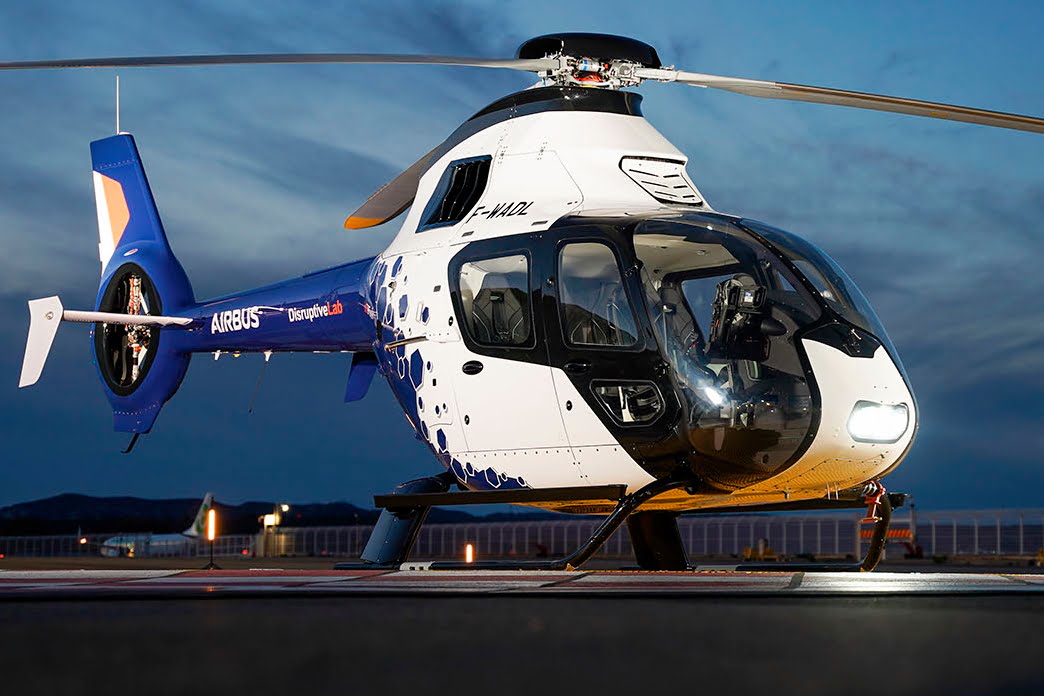Airbus unveiled a new flying laboratory designed
to test technologies destined to improve aircraft performance and
reduce helicopters’ CO2 emissions at its annual summit.
The DisruptiveLab will evaluate the new aerodynamic
architecture intended to reduce fuel consumption, as well as
pursuing the implementation of hybridisation with a fully parallel
hybrid propulsion system that enables the battery to be recharged
in-flight.
The architecture features
an aerodynamic aluminium and composite fuselage, specifically
designed to reduce drag and thus reduce fuel consumption.
The
blades are integrated into the rotor in a way that allows for a
more compact rotor head which reduces drag and therefore improves
energy efficiency while lowering the perceived noise level.
Its
lighter rear fuselage incorporates a streamlined Fenestron tail
rotor that also contributes to improved performance.
The demonstrator will take to the skies before
the end of 2022 in order to begin flight testing and maturing
the new technologies.
“The DisruptiveLab goes another step further in
Airbus Helicopters’ ambitious strategy to reduce the environmental
impact of its helicopters and to lead the way towards a
sustainable aerospace industry,” said Bruno Even, CEO of Airbus
Helicopters. “The innovative architecture and the fully parallel
hybrid propulsion system could only really be tested on a brand
new demonstrator in order to verify the combined impact in CO2
reduction which could be as much as 50 percent.”
The DisruptiveLab demonstrator is part of the
French Council for Civil Aviation Research Conseil (CORAC)’s
roadmap and has been partly financed by the French Civil Aviation
Authority (DGAC) in the frame of the French Stimulus plan, which
is part of the European Plan, Next Generation EU, and the France
2030 plan.




